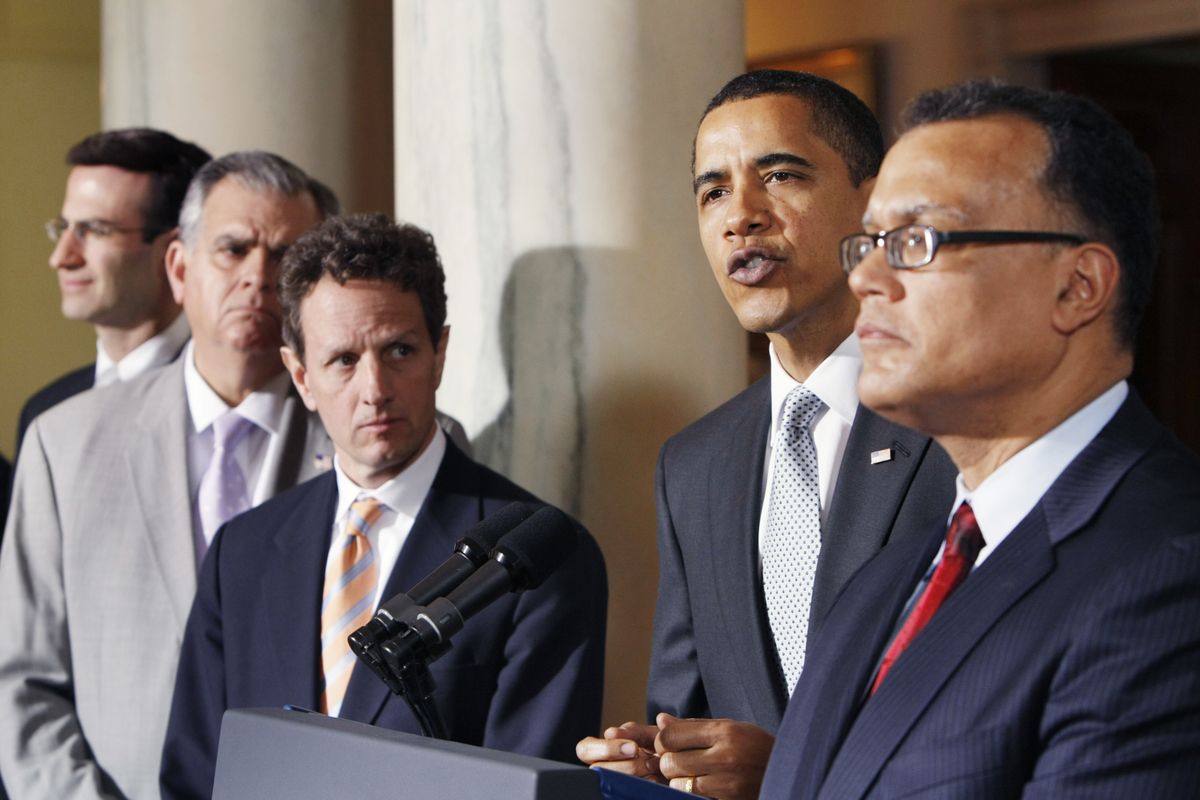Bankruptcy may be option for carmakers
Obama says filings could hasten recovery

Faced with an auto industry that is bleeding cash and seemingly unable to fix itself, President Barack Obama began laying the groundwork Monday for a possible government-sponsored Chapter 11 bankruptcy filing by General Motors Corp. and Chrysler LLC.
After threatening to cut off government aid to both companies unless they meet strict new deadlines for forging restructuring plans acceptable to the president’s auto task force, Obama said that bankruptcy filings could represent part of the solution to either company’s woes.
The move to put a Chapter 11 filing squarely on the table is an abrupt repudiation of the conventional wisdom in the auto industry that bankruptcy would be disastrous for car sales and the general economy. But with the automakers burning through billions while negotiations with creditors, unions and other stakeholders drag on, Obama may be ready to take that risk, experts said.
“If anybody was under the illusion that the Obama administration was going to sink billions of dollars into this industry until the end of time, they were disabused of that notion” on Monday, said Douglas Baird, a bankruptcy expert at the University of Chicago Law School.
Several observers said the administration’s willingness to consider bankruptcy may have both practical and tactical elements. On the practical side, few restructuring experts have ever felt GM or Chrysler could work out their myriad problems without the aid of a bankruptcy judge. Obama’s auto task force may be coming to this view.
Tactically, the task force may be sending a signal to creditors, unions and company managements that the government’s patience and checkbook are not unlimited and that if they can’t stomach the cuts needed to make GM and Chrysler viable, a court will have to make the cuts for them.
On Sunday, the Obama administration eliminated one longtime opponent of a bankruptcy filing when it asked GM Chairman Rick Wagoner to resign. Wagoner will be replaced as CEO by longtime GM executive Frederick “Fritz” Henderson.
Wagoner and other auto industry officials had warned since the car companies began running out of cash late last year that a bankruptcy filing by any of the Big Three would be disastrous for the entire industry. They said it would crush sales by scaring away consumers worried about buying such a big-ticket item from an unreliable company. And, because the industry is tightly intertwined, they said it would set off ripple effects that would threaten dealers, suppliers and other car companies responsible for a large swath of the U.S. economy.
“The people who say bankruptcy is a good idea don’t understand the complexity of the industry,” said David Cole, chairman of the Center for Automotive Research in Ann Arbor, Mich. “It’s mostly bankruptcy lawyers who are saying that because they will feast on it.”
Those advocating a bankruptcy process argue that a so-called “prepackaged” Chapter 11 filing with financing supplied by the government may be the best option for a company like GM. In a “prepack,” the various stakeholders agree to a solution in advance and use the court to enforce it in a relatively quick, in-and-out process.
That can solve a lot of problems, experts said.
GM’s debt, for instance, is currently trading at around 15 cents on the dollar, but bondholders have so far signaled support only for a deal worth a little more than 30 cents. Getting all the bondholders – a group numbering in the thousands – to agree to cuts so drastic might be impossible out of bankruptcy court, Baird said. But under the rules of a pre-arranged bankruptcy, half of the bondholders by number, or two-thirds by dollar amount, can cut a deal and drag the other, more recalcitrant investors along with them, making for a smoother process.
During his speech Monday, Obama seemed to embrace the idea of a prepackaged filing while taking pains to address concerns about spooking consumers. A Chapter 11 filing, he explained, would not mean the failure and unwinding of either GM or Chrysler.
“What I’m talking about,” he said, “is using our existing legal structure as a tool that, with the backing of the U.S. government, can make it easier for General Motors and Chrysler to quickly clear away old debts that are weighing them down so that they can get back on their feet.”
Obama also introduced specific measures to stimulate sales and make jittery car buyers more comfortable about buying from a manufacturer in financial trouble.
First, he said the government would guarantee all auto warranties so buyers don’t have to worry about being stuck with a damaged car if its manufacturer is incapacitated. Then he announced one initiative to allow car buyers to write off sales and excise tax on new cars and another to provide incentives for replacing older, less fuel-efficient cars with new ones.
One thing Obama made clear is that Chrysler and GM are very different.
Chrysler was given 30 days to complete a global partnership agreement with Italy’s Fiat.
General Motors, on the other hand, will have 60 days to forge a compromise between management, the United Auto Workers and the company debt-holders.